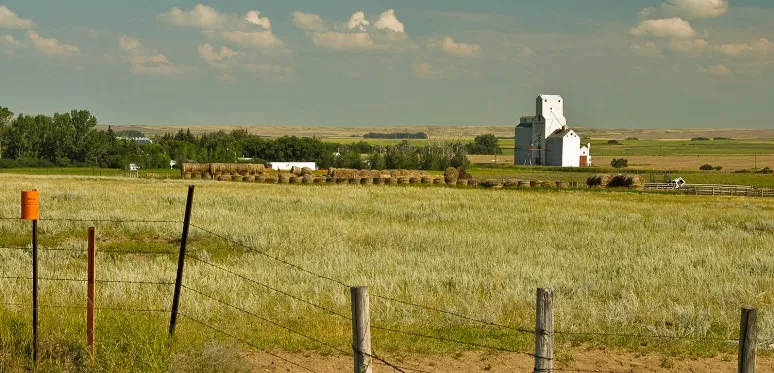The historic opportunity to connect all Americans to robust internet service is a mission that cable broadband providers have embraced. In fact, for the past few decades, cable ISPs have invested billions of dollars in expanding and upgrading broadband networks throughout their footprints across the country, from large cities to small towns.
With over 1.7 million miles of fiber-optic and coaxial cable nationwide, cable broadband networks already connect the vast majority of the United States with critical broadband infrastructure. These networks are constantly being monitored and upgraded as speeds, security, and latency improve every year. And thanks to these efforts, 80% of American homes now have access to gigabit speeds, with the possibilities of 10G—the industry’s initiative to bring 10 gigabit speeds to American households—lying just around the corner.
DOCSIS—the technology specifications developed by CableLabs that enable symmetrical multigigabit speeds, and now in its fourth iteration—and fiber have been deployed throughout rural areas around the U.S., allowing Americans who live in remote regions to access next-generation speeds. Every new version of DOCSIS technology increases the efficiency of existing infrastructure, meaning networks can be upgraded more quickly and efficiently so that people in rural (and urban) communities have continued access to cutting-edge connectivity.
But bringing this superfast connectivity to some of America’s most isolated communities presents massive challenges because of large distances between homes and businesses, difficult terrain, harsh weather conditions and the significant costs of laying fiber in these regions. This is why cable ISPs are always coming up with a mix of innovative ways to get around these obstacles and to bring connectivity to those who live in hard-to-reach places. Here is a sampling of connectivity solutions that continue to evolve:
Fixed Wireless
Fixed wireless relies on an existing broadband network to connect relay towers, therefore extending a signal miles beyond where the physical wires stop. This means that homes in the mountains, or farmers who work in grain elevators or water towers, can still receive broadband service without the need for an ISP to lay miles and miles of fiber in challenging terrain. Midco, which serves communities throughout South Dakota, North Dakota, Minnesota, Kansas, and Wisconsin, has championed the used of fixed wireless. Some of these communities have fewer than 100 people, with miles and miles of land separating one neighbor from the other.
And last year, Mediacom, whose footprint spans 22 states, announced that it was partnering with Ericsson to extend connectivity to more rural areas through the use of fixed wireless access products that use CBRS spectrum. This will allow Mediacom to offer high-speed internet services up to nine miles from each tower location, opening up the opportunity to reach thousands of underserved rural homes and businesses.
5G
5G networks are the fifth-generation of mobile networks and they are an upgrade to the bandwidth and speeds available on mobile data networks. They rely on fixed terrestrial broadband networks to be able to deliver these kinds of speeds. 5G carries with it a lot of long-term potential to become faster as data travels from a mobile device to a cell tower—which is connected to a fixed terrestrial broadband network, and which cable ISPs have spent decades investing in and building out. Mobile and terrestrial networks work hand in hand in achieving 5G and securely routing data across networks. America’s leading ISPs, including Charter, Comcast, and Cox, have been expanding 5G networks over the past few years, and GCI, Alaska’s largest internet service provider, also recently unveiled the first 5G network in the state, giving consumers faster speeds and better coverage.
Subsea Fiber
Subsea fiber involves laying fiber optic cable in the ocean to connect two or more landing points, and they are usually thousands of miles in length, transmitting huge amounts of data from one point to the other. Because of Alaska’s location on the North American continent, subsea fiber is another critical tool in their toolkit. In fact, GCI has deployed more than 6,000 miles of subsea fiber over the past two decades. Subsea fiber opens up opportunities for multigigabit internet speeds, cutting edge 5G service, and much more. It has also made it possible for GCI to launch their project to connect the Aleutian Islands, including Unalaska—one of the most remote communities in the nation.
Public-Private Partnerships
Across America, ISPs including Comcast, Charter, and Cox, have launched successful partnerships with local and state governments, school districts, philanthropists, private businesses and community organizations to build out their broadband networks in hard-to-reach towns. From rural Virginia to western Massachusetts to small communities in Kansas to the remote islands of Alaska, these areas are thriving. Thanks to the large capital investments made by ISPs, the funds from federal and state governments and private entities, and the collaborative efforts between multiple stakeholders that were necessary to cover the costs of these massive buildouts, resulted in high-speed internet access for communities that need it most.
These technologies and partnerships are examples of the innovative solutions that America’s broadband leaders are deploying to deliver the robust and ultra-fast connectivity that rural communities need to stay competitive with their urban counterparts. The disbursement of the federal funding from the Infrastructure Investment and Jobs Act, will accelerate efforts of ISPs to tackle and overcome the connectivity barriers for rural residents across the country.









